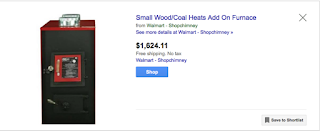On November 21, 2018, EPA proposed amendments to the New Source Performance Standards (NSPS) for Residential Wood Heaters issued in 2015. The proposed amendments would allow retailers an additional 2 years to sell the existing inventory of hydronic heaters and forced-air furnaces. EPA is also taking comment on a similar sell-through provision for wood stoves and on whether the pellet fuel requirements should be revised. This is the statement delivered by John Ackerly, the President of the Alliance for Green Heat at the EPA hearing held on December 17, 2018.
Via Public Hearing
U.S. Environmental Protection Agency
EPA WJC East Building
Room 1117A&B
1201 Pennsylvania Avenue NW
Washington, DC 20460
Re: Statement of the Alliance for Green Heat in response to EPA’s Proposed Standards of Performance for New Residential Wood Heaters, New Residential Hydronic Heaters and Forced-Air Furnaces, 83. Fed. Reg. 61,574 (Nov. 30, 2018).
Thank you for the opportunity to testify here today. My name is John Ackerly and I am the President of the Alliance for Green Heat. We promote modern wood and pellet heating systems as a low-carbon, renewable and affordable energy solution. We just hosted the 4thWood Stove Design Challenge, highlighting R& D and innovation in the sector. This industry has a lot to be proud of and some of people in the room today make some of the cleanest wood and pellet stoves in the country, enabling consumers to substantially reduce fossil fuel usage. This is a critical juncture for the EPA with regard to residential wood heaters and there is a lot at stake with regard to air quality, energy and human health.
The Alliance for Green Heat strongly opposes the proposed amendmentsthat would allow manufacturers to sell Step 1 hydronic heaters and forced-air furnaces right up to May 2020 and retailers an additional 2 years to sell them.
I want to start by saying that this sell-through is a waste of EPA’s resources. The agency has far more important things to consider, such as addressing how we transition to testing with cordwood. The EPA does not have endless time and resources to regulate wood and pellet heating. Please spend EPA’s valuable resources on issues that will advance our industry and improve efficiencies, not prolong the old technology that threatens the health of rural communities.
Second, it is very surprising that the EPA would consider relief for outdoor wood boilers, hydronic heaters and furnaces. Most of these heaters are the biggest source of the air quality problems from this industry. Given the high levels of emissions from these units, they give a bad name to all the cleaner types of wood and pellet heating appliances currently available to consumers. EPA should not reward a small part of the industry that has not invested in technology to improve performance and emissions of its heaters. Tens of thousands of low-income and rural communities could be stuck with these higher polluting units for decades to come if EPA finalizes a sell-through.
Third, EPA’s preamble says that the agency is proposing a sell-through because “it is reasonable to assume that retailers may become increasingly reluctant to purchase non-Step 2-compliant wood heating devices.” But isn’t that the desired outcome? Improving air quality and human health by increasing the efficiency of the residential wood heater sector is a principal goal of the original regulation. It is the intended result of the regulation to move retailers to focus inventory on Step 2-compliant devices. There is evidence that some retailers would likely switch to manufacturers that are producing 2020 compliant models.
Lamppa Manufacturing is one such manufacturer. Lamppa is a smaller manufacturer, and they are looking to connect with retailers. Their unit is very affordable at a retail price of $5,295 and is compliant with the 2020 Phase 2 standard. Tarm Biomass, who makes 2020 compliant wood and pellet boilers is getting calls from dealers looking for 2020 product. So are others who have 2020 compliant units. . Competition in the marketplace is fundamental to consumers having access to more efficient and cleaner burning appliances. This proposal works against these market forces, and in effect subsidizes the worst performing technologies.
We all know that this isn’t just to help retailers sell stranded inventory. After all, who are the retailers? Some of them are Home Depot, Tractor Supply, Northern Tool and other chains that need no help. Increasingly, retailers are on E-bay and it’s hard to even tell who they are, much less monitor compliance. And a big problem is that many manufacturers want to keep selling these Step 1 units and never intend to do the R&D to become Step 2 compliant. Giving them 2 more years just undercuts those who have the ability to meet Step 2.
It is important for the agency and all stakeholders to reflect on the impact of Step 1 units on air quality and energy use. One such unit made by US Stove Company is rated as only 33% efficient, yet the EPA says that their “proposed actions are anticipated to have negligible impacts on energy costs or usage.” In fact, there is clear evidence that cleaner, more advanced units will lower energy costs by decreasing overall energy use and improve air quality.
The Alliance is concerned that establishing a 2-year sell-through would add another layer of work and complexity to a regulation that has already shown serious enforcement challenges.
Finally, by providing a last-minute sell through, EPA is moving the “goal posts” in the middle of the game. Manufacturers and retailers require regulatory certainty to make business decisions that make the sector more efficient, cleaner, and safer. Putting those companies that took the EPA deadlines seriously and invested in cleaner technology at a competitive disadvantage is simply bad policy.
Companies have shown that best available technology is available and affordable. We need an EPA to craft a regulatory framework that supports efforts to modernize the sector and then stick to it. Do not approve this proposal.
























